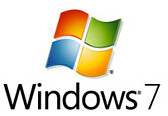
If you're one of the many people running the Windows 7 beta you'll be interested in this. Microsoft has announced several of the changes/updates being made to Windows 7 that will be included in the soon-to-be-released, Release Candidate of Windows 7.
A few of the media-related highlights from their notes include:
- Improved Internet Radio playback
- Improved playback support for video content from digital camcorders and cameras
- Cleaner Now Playing view
- Filtering content that cannot be played
- Resume from sleep
- Quieting Windows Media Player sync relationships
- Easier access to advanced settings
- Jump List improvement
- Enriching the Device Stage ecosystem
Internet radio playback continues to gain in popularity. We received feedback that sometimes playback of radio streams may be inconsistent depending on network conditions. It’s worth noting that our understanding of this issue was greatly helped by the broad scale of usage across so many customers and network topologies and our telemetry in the Beta. Windows Media Player has made changes to make streaming playback more reliable and resilient.
Customers loved the increased range of formats natively supported by the Windows 7 Beta, but noticed areas where they wanted broader support. For example, one was unable to seek to a specific spot in the video in Windows Media Player or Windows Media Center for AVCHD content that was imported from a digital camcorder. We’ve addressed this. Also, while the support for video from some digital cameras worked great, we also got feedback about supporting a broader set of devices out of the box. We’ve since added support for Windows Media Player to natively support the .MOV files used to capture video for many common digital cameras.
Customers are sharing positive reviews of Media Player’s new light-weight Now Playing view. Still some have asked to make the experience even cleaner. We’ve responded with a visual update that is more lightweight and compact.
Media Player’s library view is designed to surface and showcase one’s content. However, in some cases items were displayed that couldn’t be played. For example, Apple’s lossless .M4A or .H263 MPEG-4 content would be shown in a library even though Media Player could not play them. In RC, this content will no longer appear in the library view so that there is better expectation of what is supported by the player.
Customers are used to resuming a CD or DVD after an interruption. With customers choosing new low-cost, smaller form-factor, machines without optical drives, an increasingly popular scenario is to have content played directly from the hard drive. In Beta, it was not possible to resume playback on such content after a laptop goes to sleep. Customers assume the experience should match that of physical media so we fixed the experience to meet this expectation.
When Media Player is open and a portable media player or a USB drive is inserted, we trigger a dialog to determine whether a sync relationship should be created with the new device. Our original goal was to be proactive and help customers make a decision in context, but we received comments that this experience is jarring. As a result, we will no longer interrupt when the player is running. This is consistent with our “customer in control” goal of Windows 7 and we trust people can manually configure this should they wish to.
What enthusiast doesn’t want to tweak her player settings? This was echoed by several comments so we’ve made it easier to access and adjust settings. The equalizer, play speed, SRS WOW and other options are now surfaced via the Now Playing context menu under Enhancements.
Media Player’s Jump List provides quick access to the content customers consume. The list becomes even more powerful and complete in the RC now that we also include items launched from Explorer.
Customers have been so positive about the new Device Stage experience, one of the biggest pieces of feedback we got was “Why aren’t even more of my devices supported?” We’ve taken that feedback to heart and then took the feedback to our IHV and OEM partners to get their support for more devices. Our hardware partners in turn asked us to make it easier to integrate with the Device Stage and we worked with them on improvements. Although Windows already supports tens of thousands of devices, customer feedback on the Beta introduces even more device support in RC via the new Device Stage experience.
Not a bad list of improvements. I don't see too much that is directly related to Media Center, but several "behind-the-scenes" fixes are certainly included.
For the complete list of changes, check out the Microsoft Blog post
